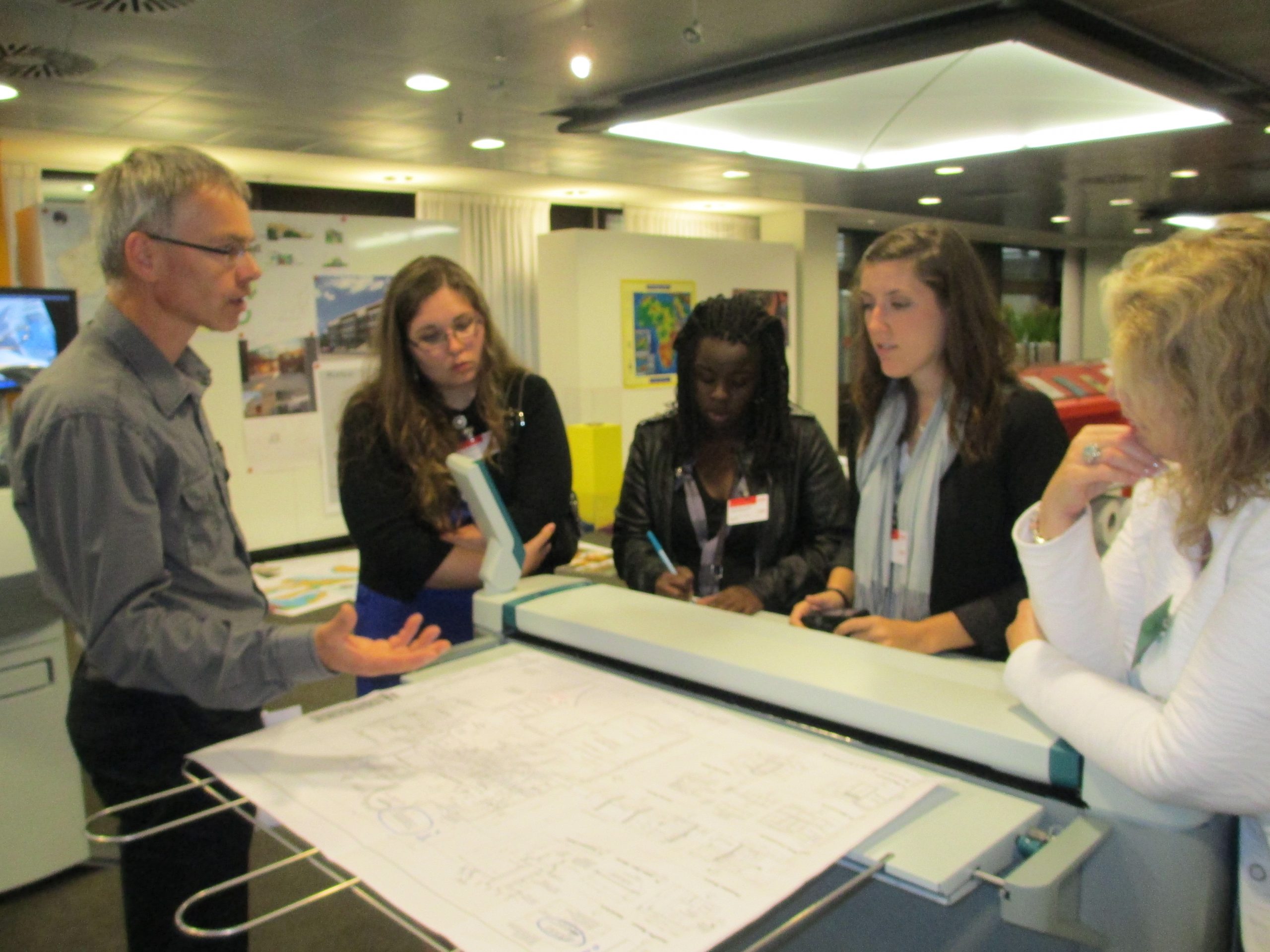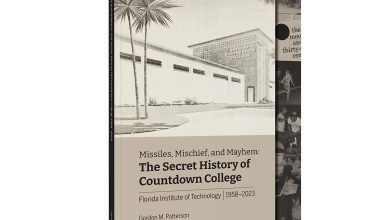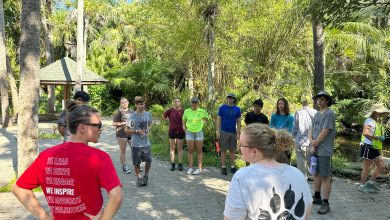Bringing the Global to Global Communication
As part of the European Study Abroad: The Netherlands, we were actively engaged with leading communication professionals on the international level, including Mr. Wim Renders of Brainport; Mr. Han Koning, the Director of the Communications Expertise Center of TU/e; a trip to Holst, Inc.; Ms. Marianne Hewlett, the Global Brand Manager, Sustainable Development Lead and Senior Vice President of Marketing Communication of Atos Origin Benelux; and the global communication director of Océ.

For anybody who had questioned “Why the Netherlands? Why Eindhoven?” for a study abroad trip, Mr. Renders presentation would have immediately silenced even the harshest nay-sayers. We arrived in Eindhoven in the midst of Dutch Technology Week, which drove home the point Mr. Renders was making: for 2011, Eindhoven was voted the “World’s Smartest Region.” Every year, an international competition is held to determine the smartest region based on a wide variety of aspects. Although relatively unknown to the average American, Eindhoven is known throughout the Continent as the “Silicon Valley of Europe” due to its heavy emphasis on technology and open innovation—this connection, in part, is what helped Eindhoven win its title. Open innovation, I would learn, was the key word for the trip.
Our first corporate visit was to the Communications Expertise Center of TU/e, where Mr. Han Koning, the Director and Editor-in-Chief, described the process of publishing two major publications: Slash, the alumni-focused magaizine, and Cursor, the biweekly, bilingual newspaper. Seeing the Communications Expertise Center in action was exhilarating. You could feel the fast-paced energy necessary to produce two publications with extremely rapid turnaround. During the presentation we were treated to a selection of coffee and tea, as well as assorted Dutch cookies, and my beloved stroopwafles (“syrup waffles”—the best invention the Dutch have ever produced in my humble opinion. Also the reason I gained 3lbs during the trip). The coffee cups had the official school logo of TU/e on them: “For Nerds and Flirts.” I feel like this should be FIT’s new logo. I was surprised to learn that the PhD presentation is completely different—PhD dissertations are published in actual book format, and the presentation is open to the public.

Our intensive culture studies continued with Professor Vincent Merk’s lecture on the Dutch culture. Hofstede, a central figure in global communication, outlined several factors by which societies differ: masculinity/femininity, power distance, individualism/collectivism, and uncertainty avoidance. Dutch and American culture is remarkably similar; however, we vary widely in masculinity and femininity. As Americans, we are extremely masculine. According to Hofstede, this translates to “a preference in society for achievement, heroism, assertiveness and material reward for success.” Conversely, the Netherlands is extremely feminine, meaning they “stand for a preference for cooperation, modesty, caring for the weak, and quality of life.” This significance difference would echo throughout later presentations. One illustration of random cultural differences that somehow remerged continually throughout the trip was Santa Claus vs. St. Nicholas. Instead of our Christmas celebrations with a fat, round Santa, the most significant holiday is on December 6th, when St. Nicholas arrives and brings presents to children’s shoes which are set by the fireplace. St. Nick is definitely more hardcore than our Santa: naughty children are not given coal. They are beaten with wooden sticks and his helpers carry them back in sacks to Spain. I wonder if that is a more effective threat to misbehaving children!
I have hardly been as impressed by anyone as I was with Ms. Marianne Hewlett, the Global Brand Manager, as well as Sustainable Development Lead and Senior Vice President of Marketing Communication for Atos Origin Benelux. Aside from her personal impeccable presentation, each word she uttered was more interesting than the last. My entire conception of a career in communication was revolutionized. For example, I had no idea that one aspect of a Global Brand Manager at an IT company would be extensive involvement in the Olympics—which is exactly what Ms. Hewlett spoke about. Her company, Atos, provides the IT framework for the Olympics, which translates into a major marketing opportunity both internally and externally. The difference in masculine and feminine cultures was immediately apparent in a question I asked. As Atos has divisions in countries across Europe, I asked if there were challenges in supporting the athlete of one country over the other: by nature of the Olympics, the countries are in direct competition with each other. She seemed genuinely perplexed by my question, focusing on the idea of “competition.” It seemed that competition was not even on the radar, echoing the idea of consensus of femininity over competition.

The moment that truly drove the idea of the difference between a feminine and masculine culture was at our corporate visit to Holst, Inc. Holst, Inc. is an entirely new kind of company. Technology is continually evolving into a thousand different directions, but the limitations of a finite R&D (research and development) budget mean companies have to be extremely focused in their projects. Or they can partner with Holst, Inc. Based on the idea of “open innovation” (I told you that you would see this again!), competing companies work together for increased progress in research. The idea is that if the best minds in the field are not separated by company boundaries, problems will get solved and the shared solution will benefit both companies drastically. Of course, the entire process isn’t as simple as I’ve made it seem, but the basic idea of open, shared innovation is the leading principle behind Holst, Inc. The idea of open innovation is truly inspiring. I can’t help but wonder how many problems we could actually solve, how many solutions we could arrive at if we had a more shared, targeted approach—even as college students, what if our research papers actually had a point beyond the 33.3% of our grade they comprise?

Our final corporate visit was to Océ, a division of Canon that produces printers. I honestly have never given much thought to printers, beyond cursing them as an abomination when they refuse to work and my term paper is due in fifteen minutes. That’s changed. After my visit to Océ, I have the secret suspicion that everybody who works with printers is actually a rockstar. First of all, the building was so extremely cool and chic, and so high-tech that I expected to see Will Smith filming a futuristic movie about robots in the corridor. Everybody who worked there was so nice and so trendy. They are working on crystal point technology, where toner comes in small beads called “toner pearls” and prints in an eco-friendly format on eco-friendly paper. They printed the entire Bible, new and old testament, on a single sheet of letter-sized paper! All 189,000 words! Completely legible and distinct (via add of a magnifying glass) without a single fuzzy line! It was amazing! Who knew that printers were the cool, sexy industry to be involved in? After a tour of the factory, we met with the director of global communication. Now, not to be harsh, but a common problem in PR and marketing is the idea that if it sells, it obviously works and is a good idea. Our presenter brought up the example of an ad campaign in Malaysia, where the popular flavor of the day is to advertise with race cars and skimpily-clad women. While effective, he cautioned that you cannot base tactics solely on sales. It might garner results, but at what cost? You have to think of the long-term picture: smoking seems like the cool, trendy option (in Europe anyway, where everyone smokes! Gross!), but it will eventually give you wrinkles, yellow nails, cancer, and a slow, painful death. You cannot do something just to keep up with popular trends if it is ultimately damaging to the health of your company. Hands down Océ was the winner (how American!) of the corporate visits: rockstars with integrity, and pretty darn cool printers.
I feel that I have developed exponentially in my path to a global communication expert after my experience with the European Study Abroad: the Netherlands program. My entire conception of the possibilities a communication degree affords was revolutionized, not to mention the fact that it was driven home that integrity is the most important guiding star as a communicator, but moreover as a person.
See more pictures of our trip on the Facebook page!






Hello, I enjoy reading all of your post. I wanted to write a little comment to support you.